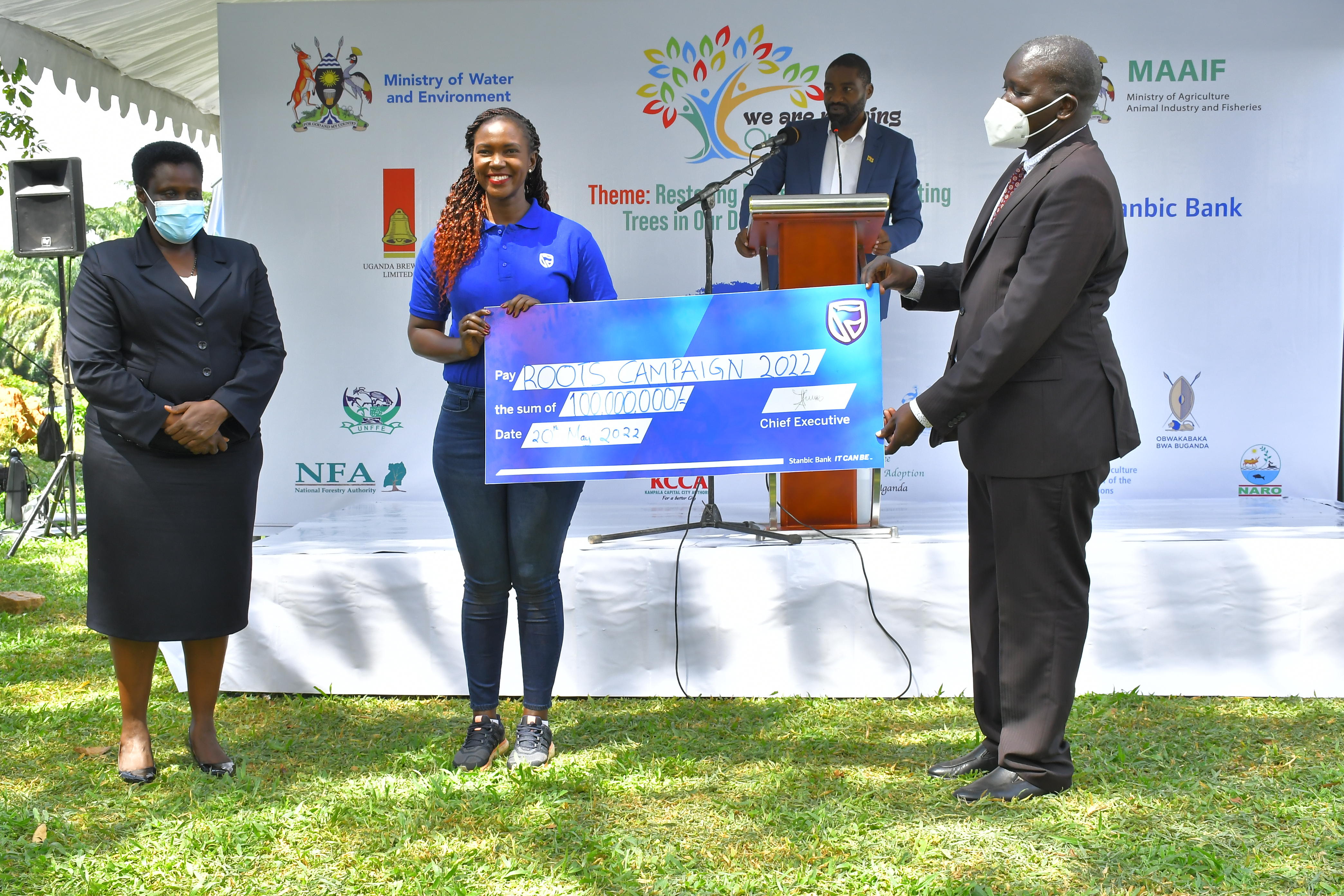
To reaffirm their commitment to climate action, Stanbic Bank has committed UGX 100Million towards tree planting to mark Uganda’s National Tree Planting Day in partnership with Ministry of Water and Environment, National Forestry Authority and Uganda Breweries Limited, TotalEnergies and other private sector and development partners. For the first time ever, the target is to plant a total of one million trees across the country on the same day.
At the ceremonial event held at Entebbe Botanical Gardens, the Guest of Honour and Chief Planter, Jessica Alupo – Vice President of Uganda said, “We are proud to see the private sector in partnership with Government in a critical initiative that will address our country’s environmental concerns. Uganda’s international obligations per the Bonn Challenge where the Government pledged to restore 2.5million hectares of degraded landscapes by 2030 will be through forest protection, afforestation and sustainable biomass production measures under Uganda’s Nationally Determined Contributions (NDC). Today, with the support of private sector partners like Stanbic Bank who are contributing to the cause, we can meet our national obligations to tackle climate change.”
Under the patronage of the Ministry of Water and Environment, the campaign themed “Running Out of Trees” that has been taking place for the past two years, has managed to bring on board several partners from the private sector. They have purchased and supported planting and mapping of trees and during 2021, planted over 31Million trees.
Stanbic has been supporting the campaign by purchasing tree seedlings which are then distributed to different schools to sensitize students on environmental conservation and sustainable development.
Speaking at the event, Stanbic Bank’s Head of Sustainability, Cathy Adengo said, “In response to the challenges affecting society, including environmental degradation, we believe we can play a key role by participating in the restoration and protection of our natural forests and promote greater foliage cover across the country.”
According to an inventory done by the National Forestry Authority in 2019, Uganda has
lost half its forestry cover in the past 30 years alone, from 4.9 million Hectares to 2.5
million Hectares. For Context, the Population of Uganda in 1990 was estimated to be
about 17.5 million by the World Bank and currently stands at over 48 million, projected
to be at 74 million in 2040 according to a World Bank Economic Update of 2020.
Thisstatistic gives us a glimpse into what the future could hold considering that 65% of
forest degradation takes place on private land as land owners choose land use change
from forestry to agriculture, industry or settlement over biodiversity conservation.
Moreover, forestry contributes 6% of the GDP of Uganda and more than 90% of the
population depend directly on forest for their energy needs i.e. firewood & Charcoal.
Last year, Stanbic Bank in partnership with TotalEnergies and Roofings Group announced a tripartite partnership to support at least 250 secondary schools to plant 150,000 fruit trees. Employees of the bank and TotalEnergies were expected to plant a third of the seedlings.
It is envisaged that by way of such campaigns, Uganda will be able to contribute to the reduction of greenhouse gas emissions and affirm its national obligations to plant 200,000,000 trees by 2026. This is included in the NRM Manifesto, the National Development Plan III as well as the National Forest Plan 2011/12-2010/2021 to restore forest cover from the current 12.4% to 24% by 2040.
In the last two decades, Uganda has carried out several policies, legal and institutional reforms aimed at promoting the conservation and sustainable use of the country’s forest resources.
Among the key reforms include, putting in place of the Uganda Forestry Policy 2001 and the enactment of the National Forestry and Tree Planting Act 2003. Despite these interventions, the country continues to lose forest cover at a very alarming rate due to deforestation.
